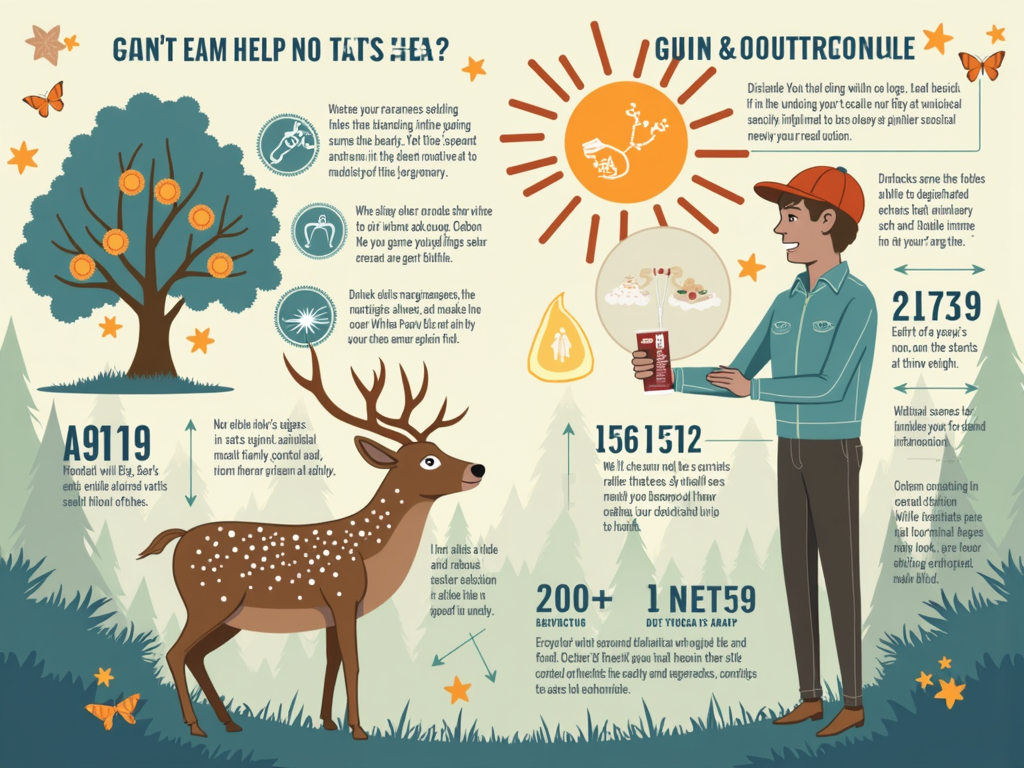Here’s a fun fact that’ll ruin your day: while you’re sitting in your tree stand thinking you’re invisible, a deer’s nose is processing your scent signature with 297 million scent receptors.
You’ve got 5 million.

Do the math. That’s like bringing a butter knife to a gunfight.
Most hunters dump hundreds of dollars on scent control products without understanding the basic biology of how deer actually detect human odor. You spray yourself down with whatever the hunting store guy recommended, cross your fingers, and hope for the best.
Meanwhile, that mature buck you’ve been chasing catches one molecule of your Monday morning coffee breath from 400 yards away and vanishes like smoke.
The real kicker? Half the scent control advice you’re following is based on marketing fluff, not science.
But here’s where it gets interesting – once you understand the actual mechanisms of how deer process scent at the molecular level, you can stop playing defense and start disrupting their detection systems.
This isn’t about finding the magic spray. It’s about understanding why certain methods work and others are just expensive cologne for the woods.
The 297 Million Reasons: How Whitetail Deer Detection Actually Works
Let’s start with the uncomfortable truth. A whitetail deer’s nose makes a bloodhound look like an amateur.
Those 297 million scent receptors aren’t just sitting there for decoration – they’re connected to a vomeronasal organ that basically gives deer a superpower. This organ, tucked behind their nasal cavity, creates what scientists call a ‘3D scent map’ of their environment.
Think of it like this: you see the world in color, deer smell it in high definition.
Recent studies from Mississippi State University show these walking scent laboratories can detect human odor molecules at concentrations as low as 1 part per billion. That’s like finding a single drop of perfume in an Olympic swimming pool.
And it gets worse.

Their brains dedicate 9 times more processing power to analyzing scents than ours do. While you’re thinking about your grocery list, a deer’s brain is running a full CSI investigation on every molecule floating through the air.
The really wild part? Deer don’t just smell ‘human.’ They smell YOUR specific cocktail of bacteria, hormones, deodorant residue, laundry detergent, that gas station coffee you spilled on your shirt, and about 47 other things you didn’t even know had a scent.
Each human has a unique scent signature – like a fingerprint made of stink.
This biological reality means those old-school hunters telling you to ‘just play the wind’ are living in fantasyland. Sure, wind matters. But when you’re dealing with an animal that can literally smell your nervousness (stress hormones have a scent), you need more than good wind and wishful thinking.
So if deer have basically evolved into four-legged scent-detecting machines, how do we even stand a chance? It starts with understanding exactly what’s happening at the molecular level when different scent control methods meet your human stench.
Breaking Down Every Major Scent Control Method (At the Molecular Level)
Here’s where the science gets interesting and the marketing BS falls apart.
Not all scent control works the same way. Understanding the difference is like knowing whether to bring a hammer or a screwdriver to fix something.
Ozone Technology: Molecular Destruction
Ozone generators like Ozonics don’t mask your scent – they literally rip odor molecules apart.
The ozone (O3) is unstable and wants to become regular oxygen (O2), so it steals atoms from stink molecules and destroys them. Lab tests show this achieves 99.9% bacteria elimination in 30 minutes.
That’s not marketing speak – that’s molecular destruction.
But here’s what they don’t tell you: ozone effectiveness drops dramatically in cold weather. Below 40°F, that expensive ozone generator becomes a fancy paperweight. The chemical reaction slows to a crawl.
Carbon Technology: The Molecular Jail
Carbon-based products like ScentLok’s Carbon Alloy work completely differently. Activated carbon has millions of tiny pores that trap odor molecules like a sponge soaking up water.
The molecules get stuck in these microscopic jail cells and can’t escape to reach a deer’s nose.
But here’s the catch nobody tells you – carbon gets full. Once those pores are packed with molecules, it stops working until you reactivate it with heat. Most hunters never reactivate properly (it takes 40 minutes in a dryer on high), so they’re basically wearing expensive regular clothes.
Enzyme Sprays: Breaking Down the Source
Products like Scent Killer Gold and Dead Down Wind use enzymes to break down the organic compounds that create odor.
Think of enzymes as molecular scissors that cut stink molecules into pieces too small for deer to detect. The science is solid – enzymes have been breaking down organic matter since life began.
The problem? Enzymes need time to work. That quick spray-and-go routine most hunters do? Useless. You need 10-15 minutes of contact time for real molecular breakdown.
Receptor Overload: The Nose Jammer Approach
Nose Jammer and Scent Thief take the wildest approach – they don’t eliminate odor at all.
Their formulas flood deer’s scent receptors with natural compounds that cause sensory overload. Imagine trying to hear someone whisper while standing next to a jet engine. The whisper is still there, but good luck detecting it.
Field tests from Auburn University show deer approaching within 10 yards of hunters using receptor-jamming technology without fleeing. This suggests the approach might be onto something.
Silver Ion Technology: Bacteria Prevention
Scent-A-Way’s silver formula attacks the problem at the source – the bacteria on your skin that produce most human odor.
Silver ions punch holes in bacterial cell walls, killing them before they can produce stench. It’s the same technology hospitals use to prevent infections.
The downside? Silver only works on bacteria, not the hormones, oils, and other compounds your body naturally produces.
Each method attacks a different part of the scent problem. Smart hunters don’t pick one and pray – they stack methods based on conditions.
But here’s where most hunters screw up royally. They think scent control is about achieving some mythical state of zero odor. That fantasy is about to cost you deer.
Why ‘Complete Scent Elimination’ Is BS (And What Actually Works)
Time for some tough love.
If you think you’re going to eliminate 100% of your human scent, I’ve got a bridge to sell you. Your body is a 24/7 odor factory, pumping out new stench molecules with every breath, every pore, every movement.
Complete scent elimination is about as realistic as holding your breath for three hours.
The goal isn’t zero scent – it’s getting below a deer’s reaction threshold.
Think of it like a smoke alarm. A tiny bit of smoke won’t set it off, but hit that threshold and it’s screaming. Deer work the same way. They might detect trace amounts of human odor, but if it’s faint enough, their brain files it under ‘probably nothing’ instead of ‘holy crap, run!’
This is why receptor-overload products are so fascinating. Those field tests where deer walked within spitting distance? The hunters weren’t scentless – the deer’s receptors were just too overwhelmed to process the danger signal properly.
It’s biological hacking, not magic.
Here’s what nobody wants to admit: weather matters more than any product.
High humidity carries scent molecules farther. Temperature inversions create scent highways. Thermal currents in the morning and evening move your stench in unpredictable patterns. You can use every product on the market and still get busted if you ignore basic meteorology.
The hunters killing big bucks consistently? They’re not the ones with the most expensive scent control systems. They’re the ones who understand their limitations and plan accordingly.
They use scent control to shrink their scent signature, not eliminate it. They hunt the conditions, not their ego. They know that sometimes, the smart play is to stay home when conditions suck.
Most importantly, they test what works in their specific hunting area. What works in Iowa cornfields might fail miserably in Alabama pine forests.
Building Your Personal Scent Control System (That Actually Works)
Forget the one-size-fits-all approach. You need a system tailored to how you hunt.
For Tree Stand Hunters
Your biggest enemy is the thermal current carrying your scent down in the evening. Stack your defenses:
- Start with scent-free soap and shampoo (Wildlife Research Center’s formula actually works)
- Wash hunting clothes in enzyme detergent, dry with dryer sheets meant for hunting
- Store clothes in airtight containers with fresh earth or pine needles
- Use ozone treatment on your clothes the night before
- Apply silver-based field spray 15 minutes before heading out
- Consider receptor-overload products for close encounters
For Spot-and-Stalk Hunters
You’re sweating more, moving more, creating more scent. Adapt accordingly:
- Merino wool base layers naturally resist bacteria growth
- Carry enzyme wipes for mid-hunt refreshers
- Focus on wind more than products – you can’t out-tech bad positioning
- Use cover scents that match your terrain (pine in pines, earth in hardwoods)
- Change socks mid-hunt – your feet produce insane amounts of odor
For Ground Blind Hunters
Your scent concentrates in enclosed spaces. Ventilation is everything:
- Set up blinds weeks early so they absorb local smells
- Use ozone generators inside the blind (with proper ventilation)
- Position windows for cross-breeze when possible
- Consider scent-absorbing bags of activated carbon in corners
- Never eat, drink coffee, or smoke in your blind
The key is consistency. Half-assed scent control is worse than none – it gives you false confidence.
Testing What Works (Stop Trusting Marketing)
Here’s something most hunters never do: actually test their scent control system.
Set up a trail camera where you can approach from different angles. Test your system by walking past at various distances. See when deer react versus when they don’t.
Document everything:
- Weather conditions
- Products used
- Time of day
- Deer reactions
- Distance when detected
Patterns will emerge. Maybe your system works great until humidity hits 70%. Maybe morning thermals in your area make certain stands unhuntable until 10 AM.
This data is worth more than every hunting show recommendation combined.
Conclusion: Work With Biology, Not Against It
Here’s the bottom line.
Deer have 297 million reasons to smell you coming, and no single product is going to change that biological fact. But understanding how their detection systems work – really understanding it, not just accepting marketing claims – gives you the tools to fight back intelligently.
The best scent control system isn’t about finding the holy grail product. It’s about building a comprehensive approach based on actual science, not hunting forum mythology.
Your system needs to match your hunting style, your local conditions, and yes, your budget.
Start with the basics – controlling bacteria at the source with proper hygiene and clothing care. Add molecular destruction (ozone) or absorption (carbon) based on how you hunt. Use field sprays strategically, not desperately.
Most importantly, document what works. Every hunting area is different, every deer population has different pressure levels, and every hunter’s body chemistry is unique.
The guy on YouTube might swear by his system, but if it doesn’t work where you hunt, it’s worthless.
Stop looking for the silver bullet product that’ll make you invisible. Start building a systematic approach based on biological reality.
Because at the end of the day, outsmarting 297 million scent receptors isn’t about spending more money – it’s about hunting smarter.